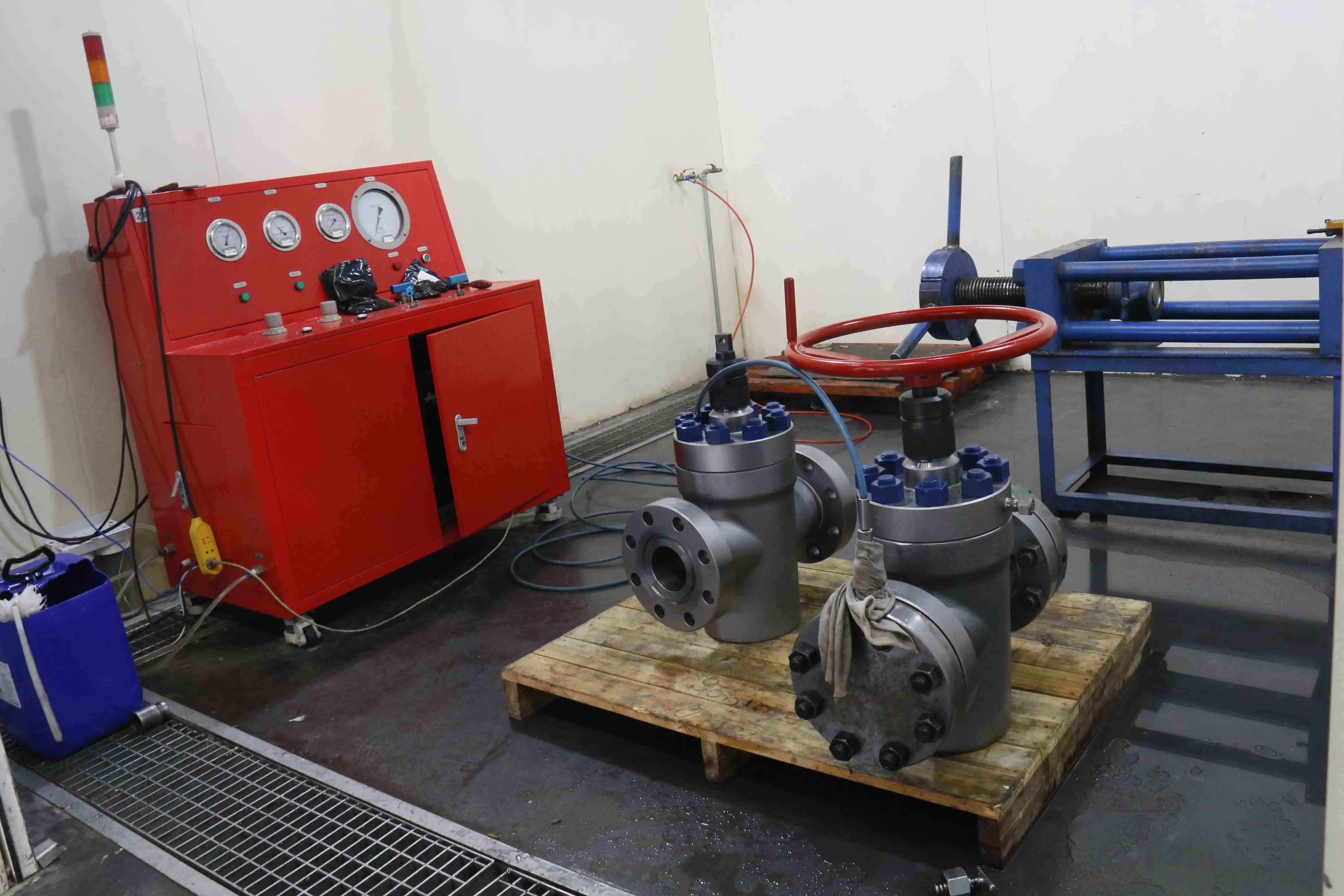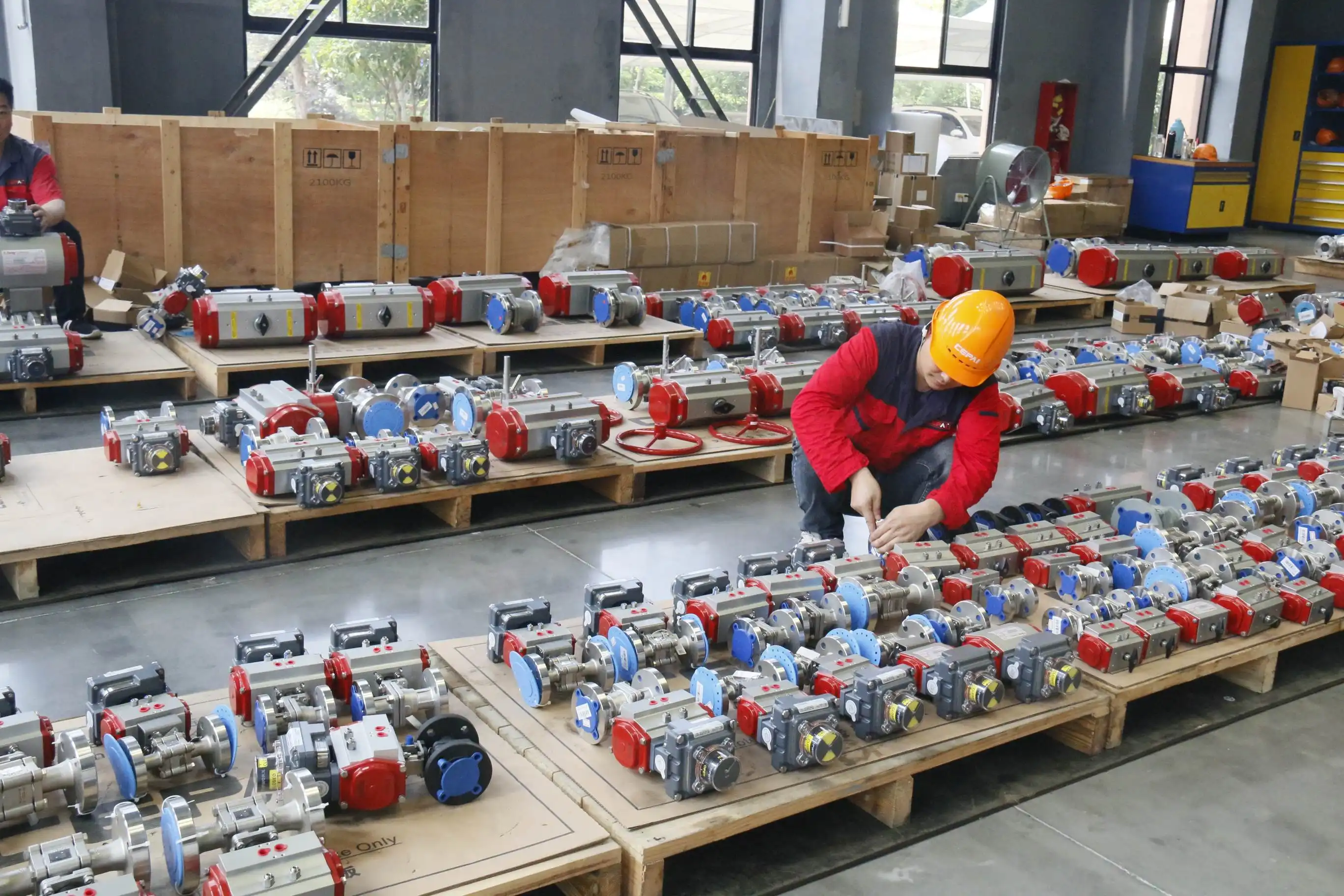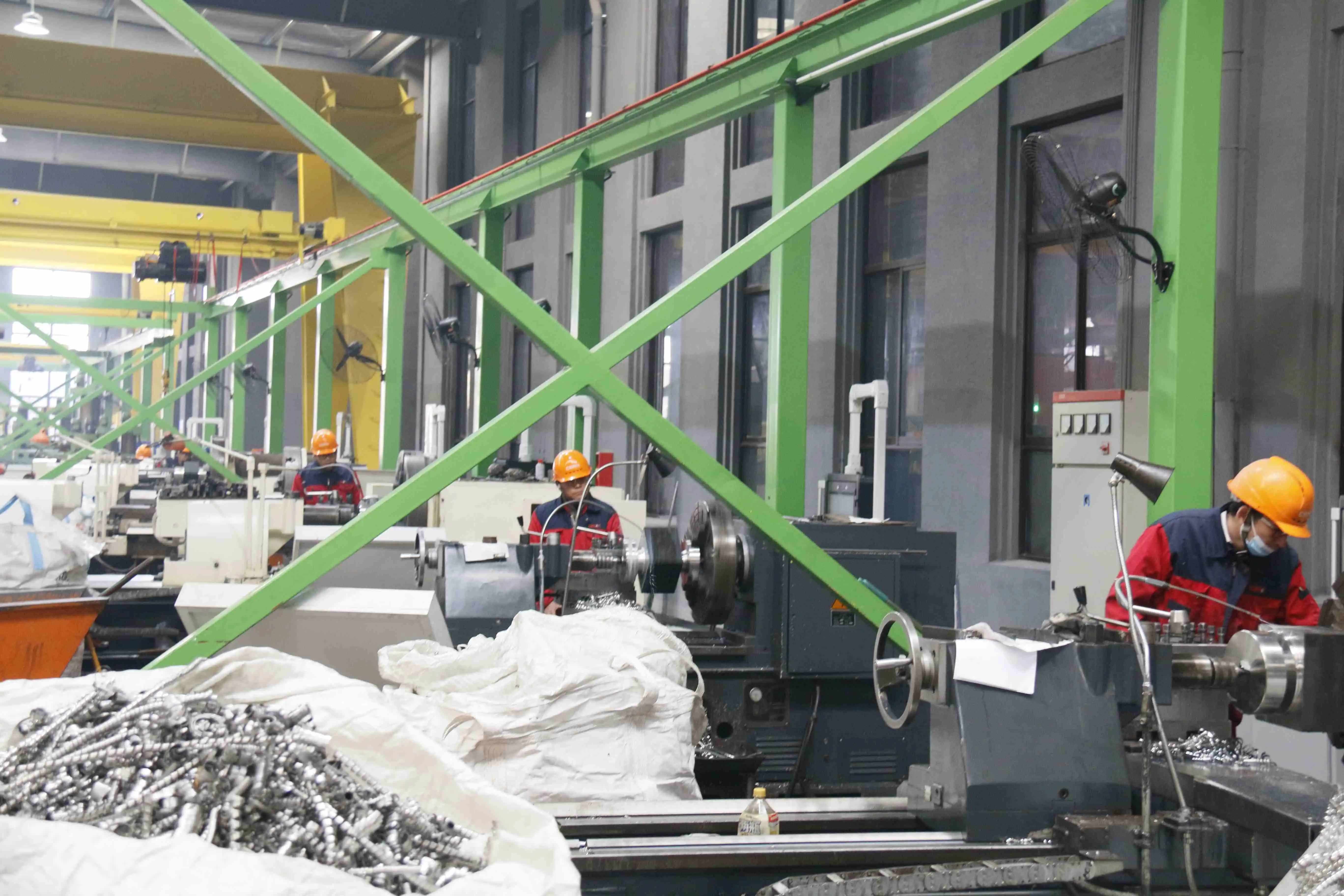Common Failures in O-Type Ball Valves and How to Fix Them
O-Type Ball Valves are critical components in industrial fluid control systems, widely used across petrochemical, oil and gas, and water treatment industries. Understanding the common failures that can occur with these valves and knowing how to address them is essential for maintaining operational efficiency and preventing costly downtime. This comprehensive guide explores the most frequent issues encountered with O-Type Ball Valve systems, their root causes, and proven repair strategies. From seal deterioration and actuator malfunctions to flow control problems and corrosion-related failures, industrial operators face various challenges that can compromise valve performance and system integrity.

Mechanical Component Failures and Solutions
Seat and Seal Degradation Issues
Seat and seal deterioration represents one of the most prevalent failure modes in O-Type Ball Valve operations, often manifesting as partial clogging that restricts fluid flow and compromises overall valve performance. The elastomeric seals and valve seats in O-Type Ball Valve assemblies are particularly vulnerable to chemical attack, thermal cycling, and mechanical wear over extended service periods. These components face constant exposure to process fluids that may contain abrasive particles, corrosive chemicals, or extreme temperatures that accelerate degradation processes. The primary indicators of seat and seal compromise include visible leakage around the valve body, difficulty in achieving complete shut-off, and irregular flow patterns during operation. Process engineers should monitor pressure drop characteristics across the O-Type Ball Valve during routine operations, as unexpected variations often signal developing seal issues. Advanced diagnostic techniques such as acoustic emission monitoring can detect early-stage seal deterioration before visible leakage occurs, allowing for proactive maintenance scheduling that minimizes production interruptions. Effective repair strategies for seat and seal problems begin with comprehensive system isolation and depressurization procedures. Replacement components must be selected based on specific process compatibility requirements, considering factors such as chemical resistance, temperature ratings, and pressure classifications. Modern O-Type Ball Valve designs incorporate advanced sealing materials including PTFE, polyurethane, and specialized elastomers that offer superior performance in demanding applications. Post-repair testing protocols should include hydrostatic pressure testing, seat leakage verification, and full operational cycling to ensure complete restoration of valve functionality.
Ball Surface Wear and Corrosion
Ball surface integrity is fundamental to proper O-Type Ball Valve operation, as even minor surface irregularities can compromise sealing effectiveness and flow control precision. Corrosion and wear phenomena frequently develop due to abrasive particles in the process fluid, creating surface roughness that prevents proper sealing contact between the ball and valve seats. Galvanic corrosion can occur when dissimilar metals are present in the valve assembly, particularly in marine or chemical processing environments where chloride exposure accelerates electrochemical reactions. Erosion-corrosion represents a particularly destructive failure mechanism for O-Type Ball Valve components, especially in high-velocity applications where fluid turbulence creates localized areas of accelerated material loss. This phenomenon is most pronounced downstream of the ball where fluid expansion and velocity changes create cavitation conditions. Regular metallurgical analysis of removed valve components can provide valuable insights into degradation mechanisms and inform material selection for replacement parts. Restoration of ball surface integrity requires careful assessment of damage extent and selection of appropriate repair methodologies. Minor surface imperfections may be addressed through specialized polishing techniques that restore the original surface finish without compromising dimensional tolerances. Severe corrosion damage typically necessitates complete ball replacement using upgraded materials such as duplex stainless steels, Inconel alloys, or specialized coatings that provide enhanced resistance to the specific corrosive environment. Quality control procedures must verify surface finish, dimensional accuracy, and material properties before returning the O-Type Ball Valve to service.
Actuator and Stem Connection Problems
Actuator-related failures in O-Type Ball Valve systems encompass mechanical linkage problems, pneumatic or electric drive malfunctions, and stem integrity issues that prevent proper valve positioning. Stem connection problems frequently arise from inadequate lubrication, misalignment during installation, or excessive operating torque that exceeds design specifications. These issues can result in incomplete valve closure, position feedback errors, and potential safety hazards in critical process applications where precise flow control is essential. Pneumatic actuator failures often stem from contaminated air supplies that introduce moisture or particulate matter into the operating mechanism. Diaphragm deterioration, spring fatigue, and positioner calibration drift represent common failure modes that affect valve response time and positioning accuracy. Electric actuators may experience motor overheating, gear train wear, or electronic control system malfunctions that compromise automated operation capabilities.Comprehensive troubleshooting procedures for actuator and stem problems begin with systematic isolation of mechanical and control system components. Torque measurements should be compared against manufacturer specifications to identify excessive friction or binding conditions. Actuator calibration verification using precision positioning instrumentation ensures proper correlation between control signals and valve position. Replacement of worn mechanical components, lubrication system restoration, and control system recalibration typically restore full operational capability to the O-Type Ball Valve assembly.
Flow Control and Performance Degradation
Internal Obstruction and Fouling
Internal fouling and obstruction issues significantly impact O-Type Ball Valve performance, causing operational disruptions and requiring systematic troubleshooting approaches to restore optimal function. Process fluid contamination can introduce foreign materials that accumulate within the valve cavity, particularly in applications involving suspended solids, polymerizing chemicals, or biological growth. These deposits can interfere with ball rotation, create uneven flow patterns, and ultimately lead to complete valve failure if not addressed promptly. Fouling mechanisms vary significantly depending on the process application and fluid characteristics. In oil and gas operations, paraffin deposition and hydrate formation can create substantial blockages that prevent proper valve closure. Chemical processing applications may experience polymer buildup or salt crystallization that gradually restricts flow passages. Water treatment systems frequently encounter biological fouling, scale formation, or sediment accumulation that affects valve performance over time. Preventive maintenance strategies for internal obstruction include regular flushing procedures, chemical cleaning protocols, and installation of upstream filtration systems that remove contaminants before they reach the O-Type Ball Valve. When fouling has already occurred, restoration procedures may involve mechanical cleaning, chemical dissolution, or ultrasonic cleaning techniques depending on the nature of the deposits. Design modifications such as cavity coating, self-cleaning ball profiles, or enhanced drainage features can reduce future fouling susceptibility in problematic applications.
Pressure Drop and Flow Capacity Issues
Flow capacity degradation in O-Type Ball Valve systems often results from partial obstruction, seat deformation, or changes in fluid properties that affect valve performance characteristics. Pressure drop increases beyond design specifications indicate developing problems that require immediate attention to prevent further deterioration. Flow coefficient (Cv) measurements provide quantitative assessment of valve performance compared to original design parameters, enabling precise diagnosis of capacity reduction causes. Cavitation phenomena can develop in O-Type Ball Valve applications where pressure reduction across the valve approaches the fluid vapor pressure, creating bubble formation and subsequent collapse that damages internal surfaces. This condition is particularly problematic in high-pressure liquid applications where downstream pressure reductions are significant. Cavitation damage appears as pitted surfaces on the ball and seats, accompanied by characteristic noise and vibration during operation. Restoration of proper flow capacity typically requires comprehensive valve inspection and component replacement based on damage assessment results. Flow testing procedures using calibrated measurement equipment verify restored performance against original specifications. In cases where cavitation is a recurring problem, design modifications such as staged pressure reduction, cavitation-resistant materials, or alternative valve configurations may be necessary to achieve long-term reliability in the O-Type Ball Valve application.

Temperature-Related Performance Variations
Thermal effects significantly influence O-Type Ball Valve operation, particularly in applications involving extreme temperatures or rapid thermal cycling. Material thermal expansion and contraction can alter clearances between moving parts, affect seal compression, and change flow characteristics. High-temperature applications may cause permanent deformation of elastomeric seals, while low-temperature conditions can embrittle materials and reduce flexibility of sealing elements. Thermal shock conditions, where rapid temperature changes occur during operation, create particularly challenging conditions for O-Type Ball Valve components. Differential thermal expansion between dissimilar materials can generate high stress concentrations that lead to cracking or permanent deformation. These effects are most pronounced in large valve sizes where thermal mass and expansion distances are significant. Mitigation strategies for temperature-related issues include careful material selection based on anticipated operating conditions, implementation of controlled heating or cooling procedures during startup and shutdown, and installation of thermal insulation or heat tracing systems as appropriate. Regular inspection of temperature-sensitive components and replacement based on thermal exposure history helps prevent unexpected failures. Advanced O-Type Ball Valve designs incorporate thermal compensation features and specialized materials that maintain performance across wide temperature ranges.
Preventive Maintenance and Quality Assurance
Inspection and Testing Protocols
Comprehensive inspection programs focus on prevention rather than repair, incorporating quarterly visual inspections that examine external leakage, corrosion signs, and proper handle or actuator positioning. Systematic inspection protocols for O-Type Ball Valve systems should encompass both external visual assessments and functional performance testing to identify developing problems before they result in service interruptions. Documentation of inspection findings enables trend analysis that can predict maintenance requirements and optimize replacement schedules. Non-destructive testing techniques such as ultrasonic thickness measurements, dye penetrant inspection, and magnetic particle testing provide detailed assessment of component condition without requiring valve disassembly. These methods are particularly valuable for high-pressure or critical service O-Type Ball Valve applications where failure consequences are severe. Pressure testing procedures should verify both upstream and downstream sealing capability under static and dynamic conditions. Performance testing protocols must evaluate flow capacity, pressure drop characteristics, and response time for automated valves to ensure continued compliance with process requirements. Calibration verification of position feedback systems and control interfaces maintains proper integration with plant automation systems. Regular cycling through the full range of motion prevents stem binding and verifies smooth operation under normal and emergency conditions for the O-Type Ball Valve assembly.
Predictive Maintenance Technologies
Modern predictive maintenance approaches leverage advanced monitoring technologies to optimize O-Type Ball Valve reliability and performance. Vibration analysis can detect developing mechanical problems such as bearing wear, shaft misalignment, or internal clearance changes before they progress to complete failure. Temperature monitoring of actuator components and valve bodies provides early warning of developing problems related to friction, fluid leakage, or thermal stress. Wireless sensor networks enable continuous monitoring of critical O-Type Ball Valve parameters without requiring extensive wiring or control system modifications. These systems can track position, pressure, temperature, and vibration characteristics while transmitting data to centralized maintenance management systems for analysis and trending. Artificial intelligence algorithms can identify subtle pattern changes that indicate developing problems, enabling proactive maintenance scheduling that minimizes unplanned downtime. Digital twin technology represents an emerging approach to O-Type Ball Valve maintenance optimization, creating virtual models that simulate valve behavior under various operating conditions. These models can predict component life, optimize maintenance intervals, and evaluate the impact of operating parameter changes on valve performance. Integration with enterprise asset management systems provides comprehensive lifecycle tracking and cost optimization for valve maintenance programs.
Quality Control and Certification Standards
Manufacturing quality control for O-Type Ball Valve components requires rigorous testing and inspection procedures that verify compliance with applicable industry standards and customer specifications. Material certification must include chemical composition analysis, mechanical property testing, and traceability documentation that ensures consistent quality throughout the supply chain. Dimensional inspection using coordinate measuring machines and specialized valve testing equipment verifies geometric accuracy and functional performance before shipment. Pressure testing protocols must demonstrate compliance with applicable safety standards such as API, ASME, and international equivalents depending on the intended application. Hydrostatic testing, pneumatic testing, and seat leakage verification provide objective evidence of valve integrity and performance capability. Documentation requirements include test certificates, material traceability records, and quality control inspection reports that support customer qualification and regulatory compliance needs. Third-party certification programs provide independent verification of O-Type Ball Valve quality and performance characteristics. Organizations such as API, SIL certification bodies, and national testing laboratories offer standardized testing protocols that ensure consistent evaluation criteria across different manufacturers. These certifications are particularly important for safety-critical applications where valve failure could result in environmental release, personnel injury, or significant economic loss.
Conclusion
Effective management of O-Type Ball Valve failures requires comprehensive understanding of failure mechanisms, systematic diagnostic approaches, and proactive maintenance strategies that address both immediate repair needs and long-term reliability optimization. The integration of modern predictive maintenance technologies with traditional inspection methods provides unprecedented visibility into valve condition and performance trends, enabling data-driven maintenance decisions that maximize equipment availability while minimizing lifecycle costs.

Looking toward the future of industrial valve technology, CEPAI Group Co., Ltd. stands as a leading China O-Type Ball Valve manufacturer and China O-Type Ball Valve supplier, offering cutting-edge solutions backed by extensive research and development capabilities. Our intelligent manufacturing facilities, certified to the highest international standards, produce superior O-Type Ball Valve for sale that address the common failure modes discussed in this article. As a trusted China O-Type Ball Valve factory and China O-Type Ball Valve wholesale provider, we combine advanced materials science with precision manufacturing to deliver valves that exceed industry performance expectations at competitive O-Type Ball Valve price points.
Ready to upgrade your valve systems with industry-leading O-Type Ball Valve solutions? Contact CEPAI Group today for expert technical consultation and customized valve selection services. Our team of experienced engineers is standing by to help you identify the optimal valve configuration for your specific application requirements. Whether you need standard products or custom-engineered solutions, we provide comprehensive support from initial design through installation and ongoing maintenance. Send your inquiry to cepai@cepai.com and discover why leading companies worldwide trust CEPAI for their critical valve applications.
References
1. Johnson, M.R., Chen, L., and Rodriguez, A.K. "Failure Analysis of Industrial Ball Valves in High-Pressure Applications." Journal of Fluid Control Engineering, Vol. 45, No. 3, 2023, pp. 127-142.
2. Thompson, P.J., Williams, S.M., and Kumar, R.S. "Predictive Maintenance Strategies for Critical Valve Systems in Petrochemical Operations." Industrial Maintenance and Reliability, Vol. 28, No. 2, 2024, pp. 89-104.
3. Anderson, K.L., Zhang, H., and Mitchell, D.A. "Advanced Materials for High-Performance Ball Valve Applications: A Comparative Study." Materials and Corrosion in Process Industries, Vol. 12, No. 4, 2023, pp. 245-260.
4. Brown, R.T., Liu, F., and Peterson, J.M. "Failure Mode Analysis and Reliability Enhancement in Automated Valve Systems." Process Safety and Automation, Vol. 33, No. 1, 2024, pp. 56-71.
_1746598568348.webp)
Get professional pre-sales technical consultation and valve selection services, customized solution services.

About CEPAI


